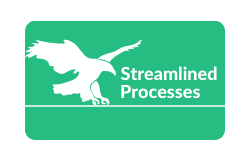For Saas Customer Data Management, see our main page here.
Understanding the Value of Saas Customer Data Management
SaaS companies thrive on customer insights. Without reliable, accessible, and secure customer data, delivering a personalized and seamless experience becomes nearly impossible. Saas Customer Data Management refers to how businesses collect, store, analyze, and utilize customer data using cloud-based applications.
Properly managing customer data allows for smart automation, deeper relationships, and informed decision-making. On the other hand, poor practices lead to compliance risks, churn, and missed opportunities. Therefore, understanding how to structure and safeguard this data is vital to growth.
Why Modern SaaS Companies Prioritize Customer Data
The SaaS landscape has shifted from product-first to customer-first. As a result, data-driven strategies now shape product development, support, and marketing efforts. With customer expectations rising, access to clean and complete data is no longer optional.
Customers interact across multiple touchpoints—email, chat, social media, and webinars. Saas Customer Data Management unifies these channels into a single customer view, allowing teams to respond faster and customize messaging. For example, a CRM integrated with usage metrics helps account managers proactively offer assistance before churn risks escalate.
Key Features of Saas Customer Data Management Platforms
A quality SaaS data system isn’t just a database. It’s an ecosystem of tools and workflows designed for clarity, automation, and collaboration.
- Real-Time Data Sync: Ensures all departments work off the same data, reducing silos.
- Access Controls: Maintains data integrity by defining who can view or change sensitive information.
- Automation Triggers: Launch workflows when a customer takes (or doesn’t take) key actions.
- Data Enrichment: Pulls in third-party sources to complete customer profiles.
- Compliance Tools: Supports regulations like GDPR, HIPAA, or CCPA with minimal manual input.
In addition, integrations with CRMs, analytics suites, and customer success tools extend value while keeping systems aligned.
Choosing the Right Tools for Saas Customer Data Management
Different teams rely on different data. Marketing may look at engagement scores, while success teams review usage rate trends. Therefore, your data tools must cater to all internal stakeholders without overcomplicating things.
Popular platforms include Segment, Snowflake, Salesforce, and Intercom—each excelling in different domains of SaaS data. For example, Segment is known for powerful event tracking and data pipelines, while Salesforce is preferred for enterprise-level CRMs.
Most importantly, choose a platform that integrates well with your existing stack, supports automation, and scales with growth.
Real-World Use Case: Enhancing Growth with Customer Data
Consider a mid-sized SaaS company offering scheduling software. Initially, they used spreadsheets to track customer interactions. As demand grew, they struggled with lost messages, delayed follow-ups, and unclear churn causes.
After implementing a unified Saas Customer Data Management system with automated email triggers, churn dropped by 12% in six months. Additionally, the support team reduced average response time by 36% thanks to full customer context integrated right into their service platform.
In short, investing in proper systems allowed them to scale support and improve retention, significantly impacting revenue growth.
The Role of Automation in Saas Customer Data Management
Automation isn’t just about saving time. It helps eliminate manual entry errors, standardizes processes, and ensures timely action. For example, an automated onboarding sequence triggered by a new sign-up improves user activation rates significantly.
Moreover, AI-assisted data analysis finds trends that teams often overlook. For instance, it might surface that users with more than three support interactions in the first month are 3x more likely to churn—giving account managers a chance to intervene early.
Common Mistakes and How to Avoid Them
Even with powerful tools, Saas Customer Data Management can fail without the right practices.
- Neglecting Data Hygiene: Incorrect or outdated data leads to poor personalization and lost trust.
- Over-Collecting Data: Gathering every possible metric creates clutter and slows down decision-making.
- Lack of Cross-Department Sharing: Siloed data hurts collaboration and insights.
- Ignoring Compliance: Non-compliant data handling, even unintentionally, results in heavy fines or reputational damage.
A strong governance policy, regular audits, and training help mitigate these risks and keep your system lean and effective.
Trends Shaping the Future of SaaS Data Management
Several shifts are changing how companies approach customer data today:
- Zero-Party Data: Users willingly share preferences in return for better experiences.
- Predictive Analytics: Platforms now forecast customer behavior to support proactive decisions.
- AI-Driven Segmentation: Intelligent grouping based on behavioral and intent signals improves personalization.
- Embedded Dashboards: Teams access data where they work most—within Slack, email, or product UIs.
These tools help reduce friction and bring insights closer to daily decisions, rather than locking them within reports.
FAQ: Saas Customer Data Management
What kinds of data should be managed?
You should track demographics, behavior (like in-app activity), communication history, feedback, lifecycle stage, and purchase history. Each type feeds a better customer experience.
How often should I clean or update customer data?
Quarterly reviews are a good start, but high-growth teams often run monthly data validation checks to preserve integrity.
Can small SaaS teams benefit from customer data management?
Absolutely. In fact, it’s more important for small teams who need to maximize every customer touch with fewer resources. Low-cost tools like Customer.io or HubSpot Starter are great starting points.
How does AI improve Saas Customer Data Management?
AI organizes raw data into usable insights, predicts churn risk, and helps tailor experiences. It’s especially helpful in managing large volumes of customer interactions at scale.
To Sum Up the Power of Smart Data Management
SaaS companies operate in fast, volatile markets—but customer data provides steady guidance. With the right tools and practices, you can reach users more personally, solve their problems faster, and grow more predictably.
In addition, better customer data supports product teams by validating roadmaps and helping prioritize features based on actual behavior. Ultimately, data becomes your most strategic asset.
This article was created with the assistance of AI tools and reviewed by our team at Streamlined Processes LLC to ensure accuracy and relevance.
Follow us on Facebook here.

